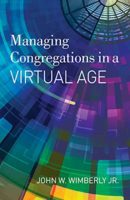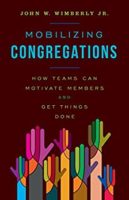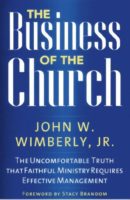As I talk with pastors, it is clear that many of them are not going back to their pre-Covid time schedules. They are reallocating time spent on worship, education, governance, mission, and administration to align with new, post-Covid realities. Some are doing this intentionally; others are just winging it. As a rule, intentionality will bring better results than winging it!
In-person worship attendance has returned to pre-pandemic numbers only at one congregation I am working with—all the rest are significantly below. This has had a psychological impact on clergy and congregants alike. Members say, “It’s pretty depressing to sit in a 400-seat sanctuary with only 100 people present.” They wonder where the rest of the people are and whether they’ll ever return.
For some clergy the impact has been devastating. Many of us get a lot of energy from a sanctuary 50 to 75% full. If we were blessed to serve a growing congregation we could—literally—see it grow each Sunday morning. The energy from Sunday morning fueled the week ahead. Today, with painfully reduced in-person attendance numbers, that energy can be missing.
How Much Time to Spend?
To me, it raises a couple of key questions. First, can we justify spending a large amount of time on worship for relatively few numbers of people (even adding in the online worshippers)? Ministry can’t be ruled strictly by per capita calculations, but we can’t totally ignore how much time we spend per person on any given activity.
When the universal church is healthy, it grows in numbers. The church grew from a small sect in Israel to the world’s largest faith community. The Acts of the Apostles describes ever-larger numbers of people gathering to worship God. In the United States, the church has grown in membership and worship attendance among other ways. Even if we put fewer hours into worship, it must remain a major focal point for our ministries.
I don’t see a future for congregations that accept ever-smaller numbers of worshippers as the “new normal.” Growing the numbers of people worshipping God—in person or online—must continue to drive congregations’ work. I know this is not a popular opinion. The count of people in the pews is often viewed as a lame data point. I disagree. The number of people gathering to worship our God always has been, and always will be, a major measure of a church’s fulfilment of its purpose.
As pastors, how do we spend less time on worship without diminishing the quality of people’s worship experience? I’m not totally sure. We need to think intentionally about how much time we spend preparing for worship and where to find efficiencies that will reduce that time. In my experience, team approaches to creating liturgies are more efficient than pastors creating them alone.
Where to Find the Time?
Are there places other than worship where we can generate time and energy for ministry? Pastoral care is one opportunity. Experts tell that our culture is increasingly filled with depressed, anxious, angry people. Is this not an opportunity for clergy to share compassion and the Gospel? To bring light into the darkness? Of course it is! Pastoral care also is one of the church’s core competencies that few others possess or practice.
There is much talk about in-person worship attendance metrics. I’d love to hear more about metrics of in-person pastoral care. Phone calls, emails, and text are fine—keep track of them in a computer program. But there is nothing like a personal visit from a pastor. In a high-tech world, high touch is where the church can make a difference and be different.
Yes, pastoral care is time intensive. To do it regularly and systematically requires a major change from the “administrative and program church” that dominated the pre-Covid era. But churches that focus on pastoral care will be the churches that are still around at the end of the 21st century.
Prioritizing Social Mission
Church leaders often say that social mission work is more challenging today because so many other nonprofits do amazing work in our communities. But I have never seen a community without major gaps in the social-welfare network. Just ask the nonprofits—they will tell you where the gaps are.
Successful mission projects create energy unlike almost anything else. When I begin consulting with a congregation, the first thing people mention often is a mission project in which they take great pride. Mission creates a positive identity for the congregation as “the church that does this or that,” both in the community and among its members.
Mission work raises a congregation’s visibility and generates energy. As a pastor, I got a lot of energy from Sunday morning worship and pastoral care. But I got just as much energy from our work with Miriam’s Kitchen for the Homeless, our work with prostitutes in D.C., our efforts to provide healthcare for poor people in Ethiopia, etc. I don’t remember any of my sermons. I do remember specifics about these mission efforts, and many more.
In the post-Covid world, things have changed—really changed. Nonetheless, the church’s core tasks remain the same—worship, pastoral care, education, mission, etc. Pastors and congregation that can realign their work hours to support the congregation’s work in the post-Covid era will be a crucial determiner of how successful we will be in ministry.
John Wimberly is an experienced pastor and consultant. As a consultant, he has worked with congregations and judicatories on strategic planning, staff designs for the 21st century, and congregational growth as well as financial and administrative management. He has MBA, MDiv, and PhD (theology) degrees. His books focus on effective management and leadership. John believes congregations can have a bright future!




